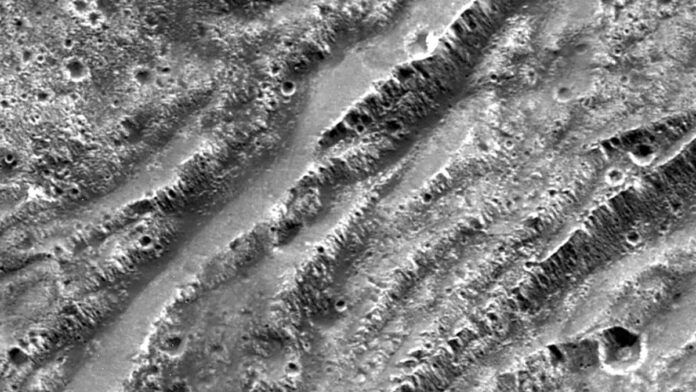Moonquakes may be be smoothing out the surfaces of moons orbiting gas giant planets Jupiter and Saturn, new research has revealed. The findings could solve a long-standing mystery regarding why many of these icy moons have such smooth terrain.
Scientists have known for some time that some of the moons that orbit the gas giants Jupiter and Saturn, the largest and second-largest planet in the solar system respectively, are geologically active. This is the result of the massive gravitational influence of these planets that stretches and squeezes the moons orbiting them, triggering moonquakes that crack the moon’s crusts and icy surfaces.
This new research implies these moonquakes can also trigger landslides that help create smooth terrains. The link between moonquakes and landslides indicates how the surfaces of these moons evolve.
Related: Behold! Our closest view of Jupiter’s ocean moon Europa in 22 years
Steep ridges surrounded by relatively smooth areas are a common sight across the landscapes of the Jovian moons Europa and Ganymede, as well as Saturn’s moon Enceladus. While scientists have speculated that these features are the work of liquid flowing from icy volcanoes, quite how the process works at low temperatures on these frigid moons that are inhospitable to liquids, has been a puzzle.
The explanation put forward in this new research doesn’t require the presence of liquid on the surface of these icy moons, however.
The team came to the surprising conclusion when they set about measuring the dimensions of these ridges, thought to be steep slopes caused by the surface breaking along a fault line with one side dropping in what scientists call “tectonic fault scarps.” They then applied the measurements to seismic models which allowed them to estimate the power of moonquakes in the history of these moons.
This revealed that some of these seismic events would have been strong enough to hoist up debris that then rolls downhill, spreading out as it does so and smoothing out the landscape of the moons.
“We found the surface shaking from moonquakes would be enough to cause surface material to rush downhill in landslides. We’ve estimated the size of moonquakes and how big the landslides could be,” research lead author and University of Arizona in Tucson graduate student Mackenzie Mills, said in a statement (opens in new tab). “This helps us understand how landslides might be shaping moon surfaces over time.”
The research conducted by Mills during a series of summer internships at NASA’s Jet Propulsion Laboratory in Southern California will get a major boost when NASA’s Europa Clipper mission heads to Europa in 2024.
The Europa Clipper mission will orbit Jupiter and conduct about 50 flybys of Europa in the process, collecting images and scientific data with its payload of nine science instruments. This should also help planetary scientists determine if there is a deep liquid ocean beneath the icy shell of the Jovian moon and if it possesses the conditions needed to support life.
“It was surprising to find out more about how powerful moonquakes could be and that it could be simple for them to move debris downslope,” Europa Clipper project scientist and research co-author Robert Pappalardo, said in the statement.
The team said it was particularly surprising to discover the strength of tectonic activity and quakes on Enceladus, as this moon of Saturn has less than 3% of the surface area of Europa and about 1/650 that of Earth.
“Because of that moon’s small gravity, quakes on tiny Enceladus could be large enough to fling icy debris right off the surface and into space like a wet dog shaking itself off,” Pappalardo said. “We hope to gain a better understanding of the geological processes that have shaped icy moons over time and to what extent their surfaces may still be active today.”
The team’s research is published in the journal Icarus (opens in new tab).
Follow us on Twitter @Spacedotcom or on Facebook.

